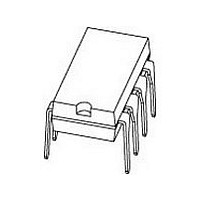TDA1308/N2 NXP Semiconductors, TDA1308/N2 Datasheet - Page 14

TDA1308/N2
Manufacturer Part Number
TDA1308/N2
Description
Audio Amplifiers HEADPHONE DRIVER; LV
Manufacturer
NXP Semiconductors
Datasheet
1.TDA1308N2.pdf
(19 pages)
Specifications of TDA1308/N2
Product
Class-AB
Output Power
80 mW
Available Set Gain
70 dB
Thd Plus Noise
0.03 %
Operating Supply Voltage
5 V
Supply Current
3 mA
Maximum Power Dissipation
25 mW
Maximum Operating Temperature
+ 85 C
Mounting Style
Through Hole
Audio Load Resistance
32 Ohms
Dual Supply Voltage
+/- 2.5 V
Input Bias Current (max)
0.00001 uA
Input Offset Voltage
10 mV
Input Signal Type
Differential
Minimum Operating Temperature
- 40 C
Output Signal Type
Single
Supply Type
Single or Dual
Supply Voltage (max)
7 V
Supply Voltage (min)
3 V
Output Type
2-Channel Stereo
Package / Case
PDIP-8
Operational Class
Class-AB
Audio Amplifier Output Configuration
2-Channel Stereo
Audio Amplifier Function
Headphone
Total Harmonic Distortion
0.03@32Ohm%
Single Supply Voltage (typ)
5V
Dual Supply Voltage (typ)
±2.5V
Supply Current (max)
5@5VmA
Power Supply Requirement
Single/Dual
Power Dissipation
25mW
Unity Gain Bandwidth Product (typ)
5.5MHz
Rail/rail I/o Type
No
Power Supply Rejection Ratio
90dB
Single Supply Voltage (min)
3V
Single Supply Voltage (max)
7V
Dual Supply Voltage (min)
±1.5V
Dual Supply Voltage (max)
±3.5V
Operating Temp Range
-40C to 85C
Operating Temperature Classification
Industrial
Mounting
Through Hole
Pin Count
8
Package Type
PDIP
Lead Free Status / RoHS Status
Lead free / RoHS Compliant
Other names
TDA1308/N2,112
Available stocks
Company
Part Number
Manufacturer
Quantity
Price
NXP Semiconductors
14. Soldering
TDA1308_A_4
Product data sheet
14.1 Introduction to soldering
14.2 Wave and reflow soldering
14.3 Wave soldering
This text provides a very brief insight into a complex technology. A more in-depth account
of soldering ICs can be found in Application Note AN10365 “Surface mount reflow
soldering description” .
Soldering is one of the most common methods through which packages are attached to
Printed Circuit Boards (PCBs), to form electrical circuits. The soldered joint provides both
the mechanical and the electrical connection. There is no single soldering method that is
ideal for all IC packages. Wave soldering is often preferred when through-hole and
Surface Mount Devices (SMDs) are mixed on one printed wiring board; however, it is not
suitable for fine pitch SMDs. Reflow soldering is ideal for the small pitches and high
densities that come with increased miniaturization.
Wave soldering is a joining technology in which the joints are made by solder coming from
a standing wave of liquid solder. The wave soldering process is suitable for the following:
Not all SMDs can be wave soldered. Packages with solder balls, and some leadless
packages which have solder lands underneath the body, cannot be wave soldered. Also,
leaded SMDs with leads having a pitch smaller than ~0.6 mm cannot be wave soldered,
due to an increased probability of bridging.
The reflow soldering process involves applying solder paste to a board, followed by
component placement and exposure to a temperature profile. Leaded packages,
packages with solder balls, and leadless packages are all reflow solderable.
Key characteristics in both wave and reflow soldering are:
Key characteristics in wave soldering are:
•
•
•
•
•
•
•
•
•
•
Through-hole components
Leaded or leadless SMDs, which are glued to the surface of the printed circuit board
Board specifications, including the board finish, solder masks and vias
Package footprints, including solder thieves and orientation
The moisture sensitivity level of the packages
Package placement
Inspection and repair
Lead-free soldering versus PbSn soldering
Process issues, such as application of adhesive and flux, clinching of leads, board
transport, the solder wave parameters, and the time during which components are
exposed to the wave
Solder bath specifications, including temperature and impurities
Rev. 04 — 25 January 2007
TDA1308; TDA1308A
Class-AB stereo headphone driver
© NXP B.V. 2007. All rights reserved.
14 of 19














